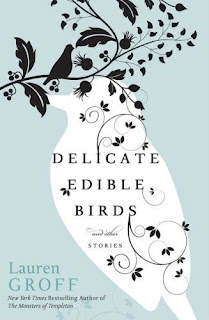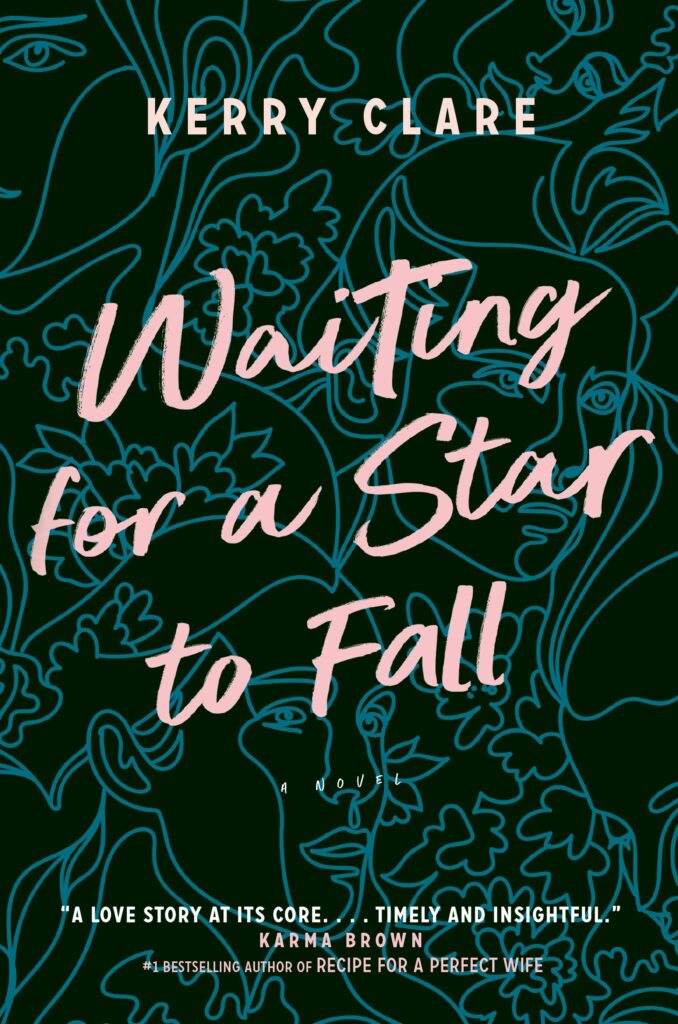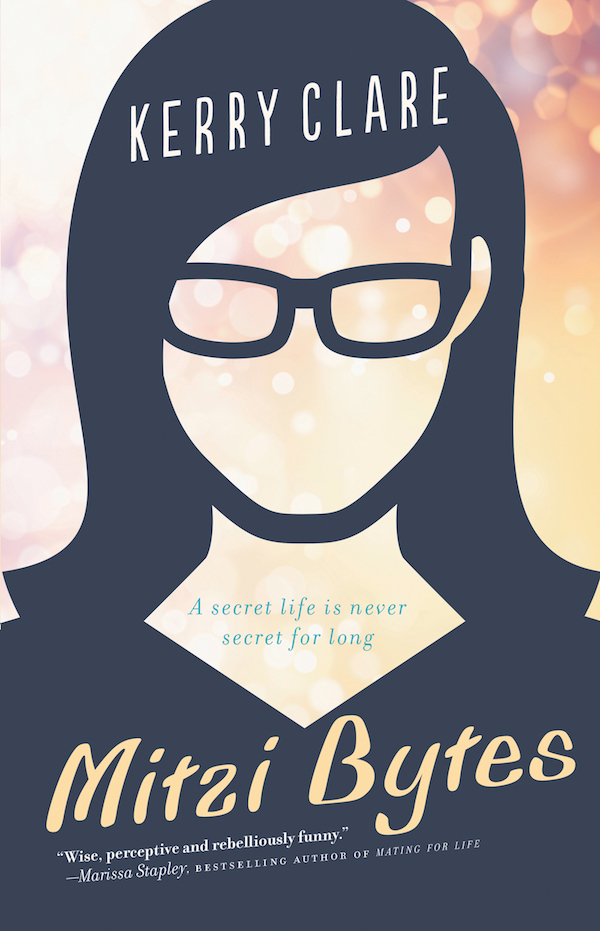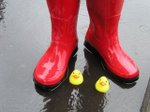April 13, 2009
Then let us drink a cup of tea
“The tea ritual: such a precise repetition of the same gestures and the same tastes; accession to simple, authentic and refined sensations, a license given to all, at little cost, to become aristocrats of taste, because tea is the beverage of the wealthy and of the poor; the tea ritual, therefore, has the extraordinary virtue of introducing into the absurdity of our lives an aperture of serene harmony. Yes, the world may aspire to vacuousness, lost souls mourn beauty, insignificance surrounds us. Then let us drink a cup of tea. Silence descends, one hears the wind outside, autumn leaves rustle and take flight, the cat sleeps in a warm pool of light. And, with each swallow, time is sublimed.” –Muriel Barbery, trans. Alison Anderson, The Elegance of the Hedgehog
April 12, 2009
Easter Sunday
 Even though we celebrate religious holidays in a secular fashion at our house, there was plenty going on this Easter Sunday. Springtime, first of all, with blue skies and sunshine. Tulips on the table, and a special Springtime cake. The ever-present squirms of our baby, who we’re just weeks away from meeting. A brilliant dinner of delicious lamb and vegetables, and seeing family. The wonderful news of another new baby, to be joining our extended family in October. This whole weekend full of good friends, delightful celebrations, and the week-old baby we got to play with on Friday. (Indeed, our lives are babyful of late. Which is good practice.) And another day off tomorrow. Now reading (the gorgeous) The Elegance of the Hedgehog, and certainly this is life.
Even though we celebrate religious holidays in a secular fashion at our house, there was plenty going on this Easter Sunday. Springtime, first of all, with blue skies and sunshine. Tulips on the table, and a special Springtime cake. The ever-present squirms of our baby, who we’re just weeks away from meeting. A brilliant dinner of delicious lamb and vegetables, and seeing family. The wonderful news of another new baby, to be joining our extended family in October. This whole weekend full of good friends, delightful celebrations, and the week-old baby we got to play with on Friday. (Indeed, our lives are babyful of late. Which is good practice.) And another day off tomorrow. Now reading (the gorgeous) The Elegance of the Hedgehog, and certainly this is life.
April 10, 2009
The Private Patient by P.D. James
 Apart from the plot twists and the suspense, of course, one of the best parts about P.D. James’ The Private Patient was its unabashed bookishness. That not only is Commander Adam Dalglish that unique combination of published poet/murder investigator, but every suspect he meets is assessed by the state of their library. Whether the books are carefully ordered with their heights fitting carefully into the shelves, or cluttered in piles about a room, or falling down where gaps in the collection have arisen. Character further established by literary references (or lack of), and self-conscious references to detective fiction.
Apart from the plot twists and the suspense, of course, one of the best parts about P.D. James’ The Private Patient was its unabashed bookishness. That not only is Commander Adam Dalglish that unique combination of published poet/murder investigator, but every suspect he meets is assessed by the state of their library. Whether the books are carefully ordered with their heights fitting carefully into the shelves, or cluttered in piles about a room, or falling down where gaps in the collection have arisen. Character further established by literary references (or lack of), and self-conscious references to detective fiction.
This was my first “Adam Dalgleish Mystery”, and I was pleased that my lack of background didn’t undermine the reading experience. Though I could discern the basics– Dalgliesh leads and elite team of murder investigators, his fiancee Emma is esconced at Cambridge and he keeps her apart from his working life, that he is growing wary of murder scenes, and perhaps his retirement is nigh?
But we don’t meet Dalgliesh until a third of the way into the book, the initial chapters focussed on staff at Cheverell Manor, a private clinic for cosmetic surgery, and the eponymous patient, investigative journalist Rhoda Gradwyn. She’s booked in for a routine operation, albeit not an easy one– the removal of a conspicuous scar from her face. But the proceeding goes as expected, she is sure to recover, and then the morning after she is discovered strangled in her bed. Suspects a plenty– her toy-boy who stands to inherit from her will, his cousins who live at Cheverell Manor and have their own stories to protect, anyone who might have it in for Mr. Chandler-Powell and his clinic (and private medicine?). Gradwyn’s own assortment of enemies, people she might have exposed throughout her career, or perhaps any one of the clinic’s staff whose alibis might be too convenient. (There being no butler, he was not a suspect).
I will admit that I found the beginning of the book a bit plodding, and thought that any book so literarily aware of itself, employing such an expansive vocabulary could well have taken better care to avoid expository dialogue in lieu of plot. But once Dalgliesh and his team’s investigation began, I was hooked, surprised by twists and revelations, intrigued by the psychology shown here of detective work, and the dynamics of the police team. It was clear to me why James is cited as a master of crime fiction, why Dalgliesh has enjoyed such enduring popularity, and how disappointed will be readers if his career has really come to an end.
April 10, 2009
"On" for just two dollars
Today at my local Toronto Public Library Branch (big ups the Spadina Road massive!) I purchased the word “on” for a new short story by Margaret Atwood. This is part of the Adopt a Word to Create a Story fundraising drive ongoing at TPL branches throughout April. For $2 per word, the story will unfold and be revealed in full at each branch and online on April 22nd. What a fabulous initiative!
April 8, 2009
On loving the "humble" cupcake
 While I like short stories a lot, I do spend a disproportionate amount of time trying to articulate exactly why this is. Perhaps because the form is under-bought and under-read (or merely under-marketed?), and because lately also there have been so many reasons to celebrate it. And perhaps further because I come up against a lot of people who flat out don’t like short stories, so then I start to get a bit zealous about conversion.
While I like short stories a lot, I do spend a disproportionate amount of time trying to articulate exactly why this is. Perhaps because the form is under-bought and under-read (or merely under-marketed?), and because lately also there have been so many reasons to celebrate it. And perhaps further because I come up against a lot of people who flat out don’t like short stories, so then I start to get a bit zealous about conversion.
I’ve been thinking about short stories even more than usual, ever since coming across Craig Boyko’s cupcake metaphor. “[Liking novels over short stories is] like preferring chocolate cake to chocolate cupcakes. Aren’t they the same thing?” I actually like cupcakes even more than I like short stories, which I don’t bother spending time trying to articulate because it’s obvious. But I do take issue with Boyko’s suggestion that cakes and cupcakes are the same thing. Just like novels and short stories, I love cakes and cupcakes very much, but each in different ways. And I wonder if perhaps an exploration of why exactly I love cupcakes as I do could clarify my relationship with short fiction.
The usefulness of this metaphor occurred to me on Sunday morning as I realized that cupcakes aren’t as dainty as they look. I was watching a small child trying to eat one at the time, which mainly consisted of said child licking frosting off the top. The cupcake was too big to fit in her mouth properly, and a smaller bite would send the cake into a mess of bits and crumbs. Further, how to get the paper peeled off? The cupcake was delectable to look at, but eating it would be a daunting task. The cake’s delicacy does indeed end with the first bite, even for an adult mouth, and the crumbs would fall, anyone would long for the service of a fork instead of clumsy fingers, and would end up unaware of a spot of frosting on the nose.
It is intimidating to consider penetrating anything so pretty. Substance could well be all or nothing. The frosting might be the highlight, or even decorative sprinkles. What if the cake is too dense, or undercooked? Perhaps cupcakes are best admired from afar.
A slice of cake, of course, is a less troubling prospect. They’re usually sloppier-looking affairs to begin with, and the damage is done as soon as a knife is pressed through its layers. (I hate cutting cake, the pressure, plus I have no eye for symmetry). You’re handed a slab of slice, with a plate and fork even, the cake’s strata submitted for examination. You don’t like jam filling, for example? Well, just eat around it, and no one will be any the wiser. Cake is certainly a safer bet.
So why then do I love cupcakes as I do? Well, however intimidating, I do admire the prettiness, the containment, the same way as a child who once had a dollhouse, I get a kick out of all things minature. The whole cakey universe in a tiny paper wrapper. I also love the aesthetics of their collection, displayed on a pedestal or just on a special plate. That they can be assorted or near-identical, and what a different offering each grouping is.
I like the portion control very very much, but moreso I like that the portion control is just an illusion. I’d feel a bit guilty having a second slice of cake for example, but would think nothing of devouring three cupcakes in a row. Or four, if they were manageable (and I’d always find a way to manage). Unlike a whole cake, which is usually too much or too little, I like that a cupcake’s very essence is that of being just enough. I like that you’re never sure what you’ll get inside it until you’re through. Not knowing what to make of the entire thing until you’re done.
The cupcake’s littleness is really deceiving. How can anything that is “just enough” be little, particularly when you can have two? And they’re bold cakes anyway, cupcakes are, on display, so photogenic. They’re stylish, decorated with edible matching accessories, urban as you like in adorable store windows. But then they can be homey too, when rendered by a different kind of hand. Or cupcake brutalism? I can imagine it.
I suppose one more reason I now love cupcakes as I do is that I’m old enough to eat them properly. It’s taken years of practice and figuring out to get that first bite quite right, and to learn to contain crumbs in my napkin or wrapper. I was once that little child facing a cupcake the size of my head, and that I am no longer means I’ve learned to have my cupcake and eat it too (or that I’ve at least learned how to have my cake and eat it afterwards). It also means that my head has grown, which is something to be pleased about after all this time.
April 7, 2009
Worry is the work
“In the years to follow, my midwifery practice taught me that for some women, worry is the work of pregnancy. In fact, an over-confident first time mom who thinks she has it all figured out worries me. I worry she will not be truly prepared for what awaits her.”– Pam England, Birthing from Within
April 5, 2009
Battered Soles by Paul Nicholas Mason
 The protagonist of Paul Nicholas Mason’s novel Battered Soles is a man called Paul Mason who is surprised to hear of a famous religious pilgrimage taken from the city of Peterborough to St. John’s Anglican Church in Lakefield, a nearby village. “It didn’t seem likely to me. I did not then expect the miraculous to reveal itself in a turf that was to some degree familiar.”
The protagonist of Paul Nicholas Mason’s novel Battered Soles is a man called Paul Mason who is surprised to hear of a famous religious pilgrimage taken from the city of Peterborough to St. John’s Anglican Church in Lakefield, a nearby village. “It didn’t seem likely to me. I did not then expect the miraculous to reveal itself in a turf that was to some degree familiar.”
But then miraculous revelation in familiar places is the jurisdiction of fiction in general, really, and Mason plays with this further by situating the familiar (which is himself, or someone like him) inside a story wholly imagined. Moreover, through such imagining, Mason has also managed to re-imagine Peterborough and Lakefield, rendering these seemingly ordinary locations (at least to those of us who’ve lived there) as places to be considered anew.
The fictional Paul Mason is familiar with Peterborough, because he’d attended university there at Trent in the 1970s. And he’s intrigued by the idea of the pilgrimage, being someone who has “long felt drawn to religious questions, even if [he’s] in short supply of doctrinal answers”. The story that follows is Mason’s account of his journey towards the blue-skinned Jesus sculpture in the basement of the St. John’s church. The sculpture was created by a lesbian artist called Daz, who used to follow the pilgrimage route to her lover’s home in Lakefield. After Daz is killed, struck down by a car on her bicycle, the church’s caretaker cleaning around the statue suddenly finds his arthritis cured. Word of the miracle gets around, and the pilgrims begin arriving from around the world.
As might be expected by a novel whose title is a pun, the humour throughout is a bit goofy, the wisdom folksy. I frequently laughed out loud as I read (it occurs to me to note: there is no other way to laugh, is there?) and enjoyed traveling alongside Mason and the colourful characters he meets. The story as much a meditation on faith as the pilgrimage is meant to be, Mason’s incidental asides providing Battered Soles with an additional great deal of charm. Faith itself meant in an ecumenical sense, as suggested by an Anglican pilgrimage towards any Jesus painted like a Hindi deity (with Baptists along the way). This becomes a story about people of all kinds. With no doctrinal answers, but indeed the questions open wide, underlining the very point: journey matters more than destination anyway.
April 5, 2009
Mini-Break, with frost on
 Ah, so we realized why we’d been able to get such a good deal on our spring weekend getaway– because where we were about to get away to could very well still be winter. The snow started falling not far up Highway 400, and we had to contend with roads variously icy or flooded as we made our way toward an old friend of mine to have lunch with her beautiful family. Definitely worth the peril though, as our reunion was glorious, her husband and baby were terrific, and they served a wonderful meal by the warmth of their wood stove. Also good was the jar of maple syrup we came away with, which they’d tapped from their trees.
Ah, so we realized why we’d been able to get such a good deal on our spring weekend getaway– because where we were about to get away to could very well still be winter. The snow started falling not far up Highway 400, and we had to contend with roads variously icy or flooded as we made our way toward an old friend of mine to have lunch with her beautiful family. Definitely worth the peril though, as our reunion was glorious, her husband and baby were terrific, and they served a wonderful meal by the warmth of their wood stove. Also good was the jar of maple syrup we came away with, which they’d tapped from their trees.
From there, we proceeded to the resort where we were booked, got lost by the town of Windemere so I was very nearly late for my pre-natal massage at the resort spa. Because it was to be that kind of weekend, the spa I mean, not the tardiness (for we arrived in the nick of time). The bad weather was not afterwards a problem, for we had no desire to go outside. Not while there was a pool to be played in, and a delicious dinner to linger over. This morning I lazed in bed reading and laughing at Playing House by Patricia Pearson, then we were energized enough to make it to the hotel brunch, whose chief feature was a chocolate fountain, and the spread was thoroughly delicious, sumptuous and by today the sun was shining anyway. The snow was quickly melting as we left Muskoka behind us, brilliant skies and gorgeous rays along the road to home.
April 3, 2009
Delicate Edible Birds by Lauren Groff
 Stunning, stunning, stunning, let me sing the praises of Delicate Edible Birds by Lauren Groff. I fell in love with her novel The Monsters of Templeton last year, but anything so extraordinary could well have been a trick of hype. By “anything so extraordinary”, of course, I mean Groff’s literary talent, and so it thrilled me as I read her short story collection to realize she’s definitely credible, and her work is enduring.
Stunning, stunning, stunning, let me sing the praises of Delicate Edible Birds by Lauren Groff. I fell in love with her novel The Monsters of Templeton last year, but anything so extraordinary could well have been a trick of hype. By “anything so extraordinary”, of course, I mean Groff’s literary talent, and so it thrilled me as I read her short story collection to realize she’s definitely credible, and her work is enduring.
The stories are remarkable, but just as much is their collection. And not simply because of the gorgeous cover design (whose theme of loveliness is continued through the book entire). I will say, however, that this is a book worth judging by its cover, for the reader will not be disappointed. The cover’s bird motif appearing throughout the collection, joining these stories otherwise so disparate by style, narration, location, characterization. But the birds are there, and so is water, bodies of big and small, and swimmers, and poolside loungers, and drownings and rain. So that to ponder all these stories together after the fact is to draw surprising connections, new conclusions. Here are nine stories that belong together, but not in ways that one might suspect.
Lauren Groff is a storyteller in the old-fashioned sense. Her intention is not to cultivate realism, but rather atmosphere, fully steeped. Her narrators take on a nineteenth-century kind of omniscience, have a sweeping way about them, and the storytelling is really as much of the point as the story itself. Characters sometimes taking on fairytale proportions, particularly male ones who are devious and dastardly, which might be regarded as limited dimensionality, but I think it’s just another kind of dimension altogether.
The nine stories collected here are long and developed with slow subtlety. “L. DeBard and Aliette” tells the story of a poolside romance between a determined polio victim and a poet against the background of the 1918 Spanish Flu pandemic. That its ending is wandering yet still shocking shows its force is much more than a trick. “Majorette” traces the life of a baton-twirling girl fenced in by limitations thought to be hereditary, but then shows this is not the case. I loved “Blythe”, which traces the story of a high-maintainence friendship, and the plight of the friend called on for saving time and time again. “Watershed” was a tragic romance dark and never saccharine. And while “Majorette” reminded me of Revolutionary Road, “Delicate Edible Birds” had something of Suite Francaise about it, and what kind of a span is that? Her tropical locations were also a wee bit Joan Didion.
Which is not to say that Lauren Groff is derivative, and I mean these references as compliments rather than explanations for. Because stunning, stunning, stunning, I’m still singing– that all these works can come from one author, particularly one still young, is incredibly impressive. That the short story form is celebrated here with such deftness, and confidence, is terribly exciting. And the whole career Groff still has before her– it’s exciting to contemplate all that lies ahead for us to read.
April 2, 2009
Preferring chocolate cupcakes
Lovely that Shirley Hughes’ Dogger has been reissued, though I hope my baby is content with an older edition, as I’ve been saving it all this time. On Cold Comfort Farm by Stella Gibbons, and it really is about time I read that book. Annabel Lyon’s review of the new Mary Gaitskill collection is one of the most entertaining reviews I’ve read ever, as well as quite persuasive: “Short story fans like things short, so here’s the skinny: Buy this book. Now, for the rest of you, the fat…” Craig Boyko on the short story, which I only read because of cupcakes in the headline, but I’m glad I did: “If stories do not sell, I guess it must be because people prefer to read novels. As someone who enjoys short stories, I find this preference odd. It’s like preferring chocolate cake to chocolate cupcakes. Aren’t they the same thing?” (They sort of are. Except that cupcakes are their own particular brand of amazing.)





